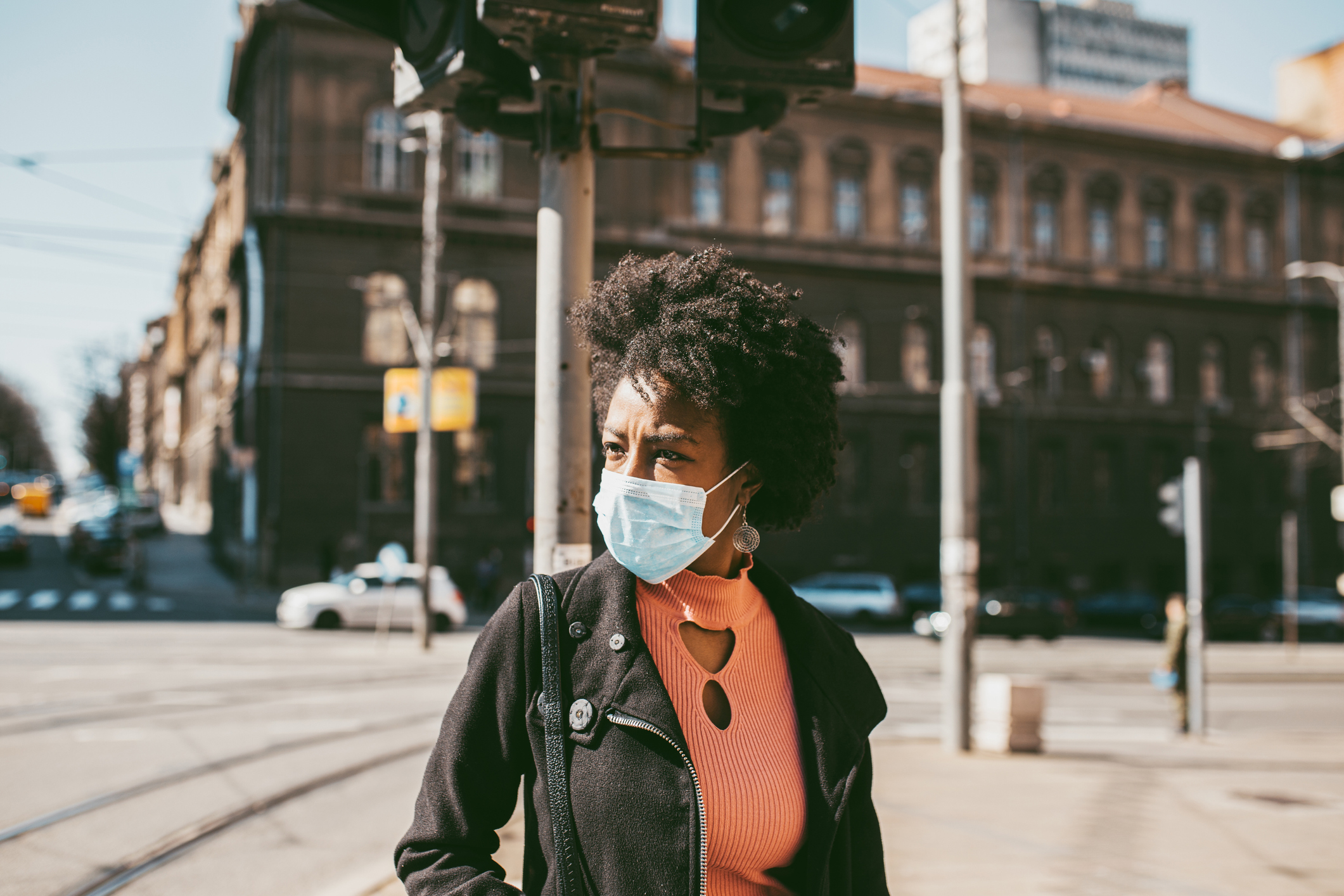

TMI Senior Researcher and
Development Specialist
Structural racism is a public health crisis. It is the underlying condition fueling disparities in COVID-19 outcomes. Our success at fighting the spread of COVID-19 and ensuring public health and safety is predicated on acknowledging and addressing the pre-existing condition of structural racism that enables this pandemic to flourish.
It’s no coincidence that Black Americans were recently found to be much more likely to die of the virus than white Americans, or that a recent study found infection rates were five times higher in majority-minority zip codes than in White neighborhoods. Ongoing structural inequalities in nearly all aspects of life, from the economy to housing to health care delivery systems, show clear evidence of racial disparities. It is these inequalities, rather than any biological or cultural differences, that contribute most dramatically to the disparity in deadly outcomes of the current pandemic in Black communities relative to White communities.

Recent reports have revealed just how stark the disparities are when it comes to the prevalence of COVID-19 and related death. Though Black people comprise only 26% of the population in Milwaukee, Wisconsin, they represent 73% of the people who have died from COVID-19. In Chicago, 32% of the population is Black, but this community makes up 67% of the COVID-19 deaths. This same pattern of racial disparity can be seen in states across the country that have released COVID-19 data by race, including Louisiana, Illinois, and Michigan.
Black people remain the most segregated population in the country. The combination of racial segregation and economic inequality creates bubbles of magnified risks that make this community extremely vulnerable to high rates of mortality from COVID-19. This combination of race and place that undergirds health disparities highlights the need for targeted interventions to protect and serve those communities made especially vulnerable to this pandemic.
Conditions comorbid with COVID-19, such as asthma and hypertension, have also been empirically linked to patterns of structural racism through residential segregation. As of 2018, the rate of childhood asthma was more than double for non-Hispanic Black people compared to non-Hispanic Whites. A 2010 study of health records in New Jersey showed that the difference between Black and White rates of childhood asthma is dramatically affected by whether a child lived in a predominately Black zip code, suggesting that the disproportionate amount of environmental hazards found in communities of color are making COVID-19 even more deadly for Black people.

Residential segregation not only increases Black people’s risk of chronic illnesses, it also limits their access to health care professionals and hospitals. According to a recent study, 89% of the majority Black communities in Los Angeles and 73% of the majority Black communities in Chicago are in “trauma deserts.” Trauma deserts are communities in which residents would need to travel more than about five miles to reach the closest trauma center.
So what can be done? Each of the disparities that have contributed to the crisis have solutions that, if addressed, can have positive effects on the health and safety of Black people made vulnerable to COVID-19 as a result of structural racism. Solutions to support low-wage frontline workers, such as expanding provisions for paid sick leave and health care, providing hazard pay and personal protective equipment, as well as increased sanitization and disinfection measures on public transportation, would go a long way toward mitigating some medical risks.
Additionally, we should create a racial equity regional health approach for COVID-19 hotspots that recognizes that residents of segregated Black neighborhoods are at-risk communities. We can do this by:
Racial disparities in COVID-19 infections and deaths are also influenced by the dynamics of mass incarceration. Incarcerated people in the U.S., nearly 60% of whom are Black and Latinx, are also disproportionately affected by COVID-19 and its devastating effects. Those incarcerated during this time face increased risks from overcrowding in prisons, jails, and youth and immigrant detention centers. It’s impossible for the incarcerated population, as well as the individuals who work in these institutions, to properly adhere to the Centers for Disease Control and Prevention’s recommendations on social distancing. Moreover, many incarcerated individuals have underlying conditions that make them extremely vulnerable to COVID-19.
However, creating procedures for the quick and early release of particular categories of incarcerated people, taking steps to ensure the health and safety for individuals who remain incarcerated, and providing access to appropriate medical care in medically appropriate settings can mitigate the risks even in this setting.
An effective public health intervention can only be achieved if the needs and health of all Americans are considered. A racial equity lens, including the targeting of resources to racially segregated communities at greatest risk, is the only way to truly mitigate the threat from COVID-19 to the lives and well-being of all.
Read the Thurgood Marshall Institute’s latest brief, Structural Racism is a Public Health Crisis: Addressing Racial Disparities in COVID-19, to learn more about the inequalities that increase the risk posed by COVID-19 for Black residents in highly segregated neighborhoods.
